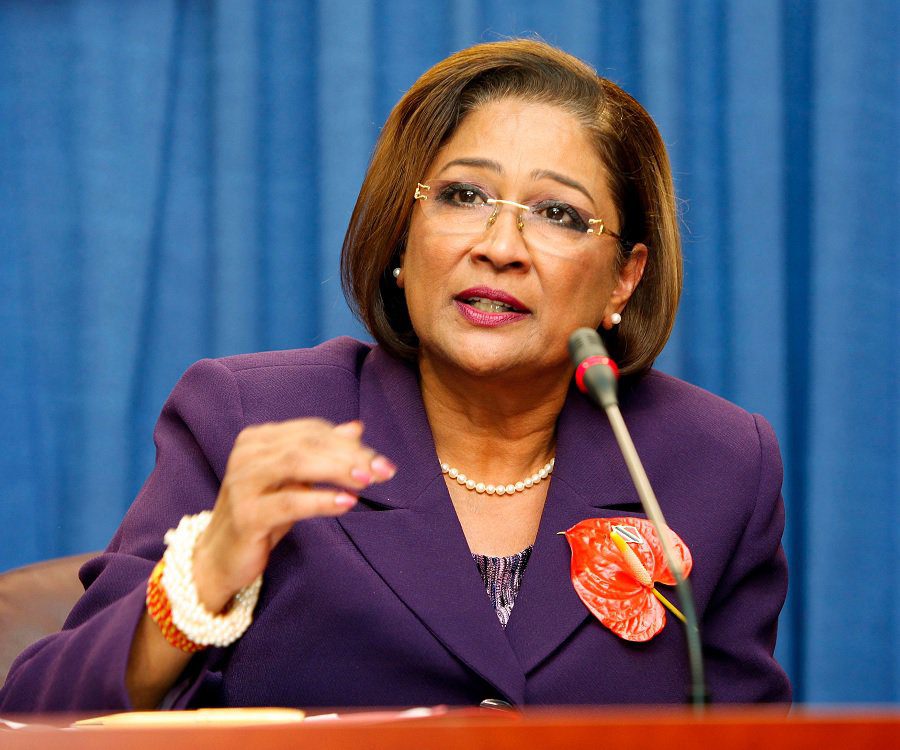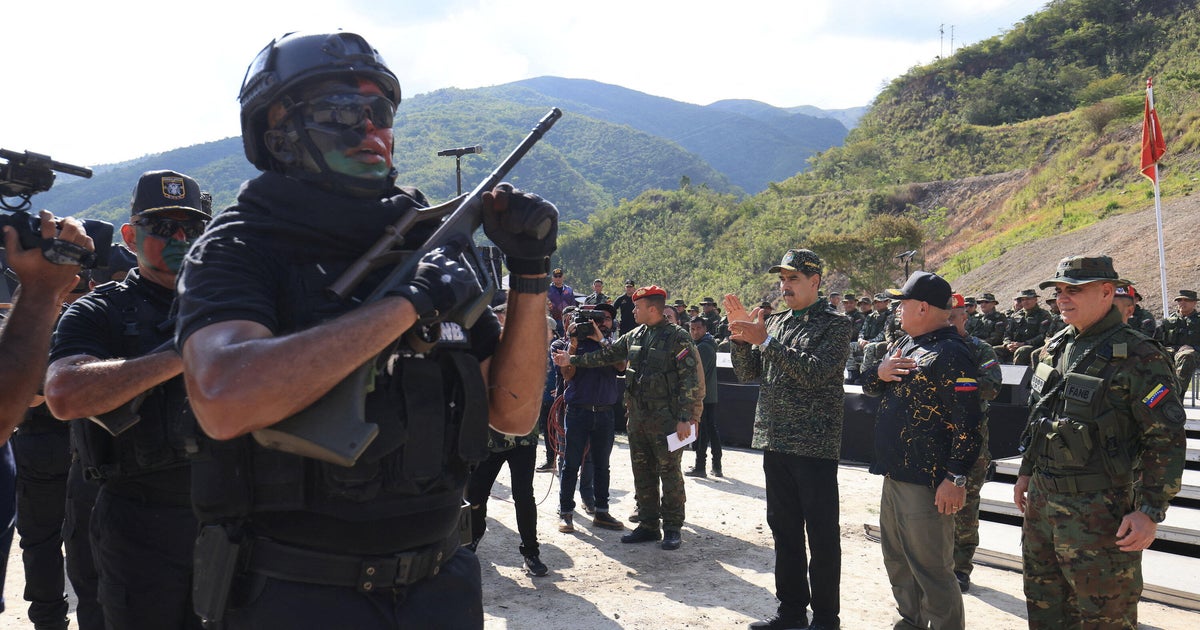- Joined
- Mar 3, 2021
Senators in Mexico engage in fistfight after heated debate over U.S. military intervention against drug cartels - CBS
Last edited:
Senators in Mexico engage in fistfight after heated debate over U.S. military intervention against drug cartels - CBS



 oilnow.gy
oilnow.gy

Venezuela's Maduro says "no way" U.S. can invade after Washington deploys warships to region
Updated on: August 29, 2025 / 7:26 AM EDT / CBS/AFP
Venezuelan President Nicolas Maduro said Thursday there was "no way" American troops could invade Venezuela after Washington deployed multiple warships and 4,000 troops to the Caribbean to pressure the leftist strongman.
The United States said the deployment to the southern Caribbean, near Venezuela's territorial waters, is an anti-drug trafficking operation.
Venezuela has responded by sending warships and drones to patrol its coastline and launching a drive to recruit thousands of militia members to bolster its defenses.
"There's no way they can enter Venezuela," Maduro said, vowing that his country was well prepared to defend its "peace, sovereignty and territorial integrity."
The United States has, however, made no public threat to invade.

Venezuela's Maduro says "no way" U.S. can invade after Washington deploys warships to region
Venezuela has responded by sending warships and drones to patrol its coastline and launching a drive to recruit thousands of militia members.www.cbsnews.com
The Ticonderoga-Class Guided-Missile Cruiser, USS Lake Erie (CG-70), part of the large-scale deployment of warships by the U.S. Navy into the Southern Caribbean Sea and off the coast of Venezuela, has been spotted docked in Balboa, Panama.
Maduro Plans to Flee to Nicaragua
Renowned journalist Jaime Bayly stated that Venezuelan President Nicolas Maduro is allegedly planning to escape with his family to Nicaragua, following the military pressure the United States is exerting on the South American country and the threat of military intervention.
According to the Peruvian journalist, based in Miami, various signs point to the possibility of an “imminent escape” by Maduro and his family circle to Nicaragua, a political ally of the Venezuelan government, amid growing U.S. military and judicial pressure on the leaders of Chavismo.
“The most important news of the day is that the Venezuelan dictator Maduro is reportedly planning to flee with his family — that is, with his wife, their son together, and the three children she had from a previous relationship — to Nicaragua,” said Bayly, who claimed that the Venezuelan leader may be looking for alternatives in case “Trump were to order his military forces to enter Venezuela to capture Maduro for being the head of a drug cartel, the Cartel of the Suns.”
The journalist also reported flights of a plane from Caracas to Managua, which would allegedly be transporting part of the Venezuelan president’s fortune. “Apparently, the plane was loaded. Loaded with what? Well, loaded with money. Loaded with bars, with gold ingots. Maduro would be taking part of his ill-gotten fortune to Managua,” said Bayly, who claimed that this flight, on a Conviasa 737, had been detected “by people who track flights around the world.”
According to the journalist, this plane, which had already been detected on a similar flight on Aug. 15, would be transporting “suitcases, bags, boxes full of dollars, euros — mainly euros — and gold lingots.”
In fact, Bayly’s information coincides with reports from flight monitoring platforms such as FlightRadar24, which detected the flight of an Airbus A340 aircraft, registration YV1004, belonging to the state airline Conviasa, usually used by top Venezuelan officials, including Maduro and Diosdado Cabello, according to Colombian television channel NTN24.
The main source of this information, cited by Jaime Bayly, is Venezuelan journalist Emmanuel Rincon, who claimed that Nicaragua, under the political control of Daniel Ortega and his wife Rosario Murillo, remains the primary refuge considered by Maduro’s inner circle in the event of a U.S. intervention. “Maduro always thought of Managua as his first option to flee, and he hasn’t changed his mind,” Bayly said, quoting Rincon.
Jaime Bayly also announced that Curaçao and Aruba no longer allow direct flights from their territory to Venezuela, adding to what Trinidad and Tobago had already declared — that it was willing to cooperate with the U.S. if the time came to launch a U.S. military operation against the South American country.

Maduro Plans to Flee to Nicaragua with His Family, Journalist Jaime Bayly Claims
Journalist Jaime Bayly claims that Nicolás Maduro plans to flee to Nicaragua with his family after taking his fortune out of Venezuela.colombiaone.com
A US Air Force Lockheed Martin C-130J Super Hercules just left Santo Domingo, heading south….
U.S. military presence in Latin America & the Caribbean
The United States has some 800 military bases around the world, with 76 in Latin America and the Caribbean to protect its hegemonic interests in the region. Among the best known are 12 in Panama, 12 in Puerto Rico, nine in Colombia, and eight in Peru, with the greatest number concentrated in Central America and the Caribbean.
Looks like a big flattop won't be needed. IMO
Soto Cano AB HondurasI wonder if a big carrier is going to show up around there. I'm gonna have to check to see what land air force bases are in range. I know they can fuel up in the air, but I don't think that's conducive for high volume strike sorties.
Can't find confirmation.Guyana reports incidents of Venezuelan troops firing across the border
@DEFCON Warning System @RiffRaff @Torch @7gtz @Irag8er

